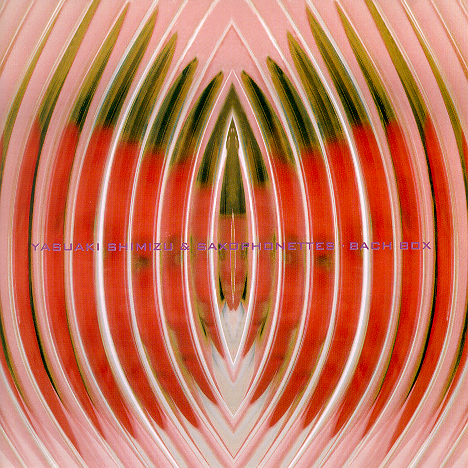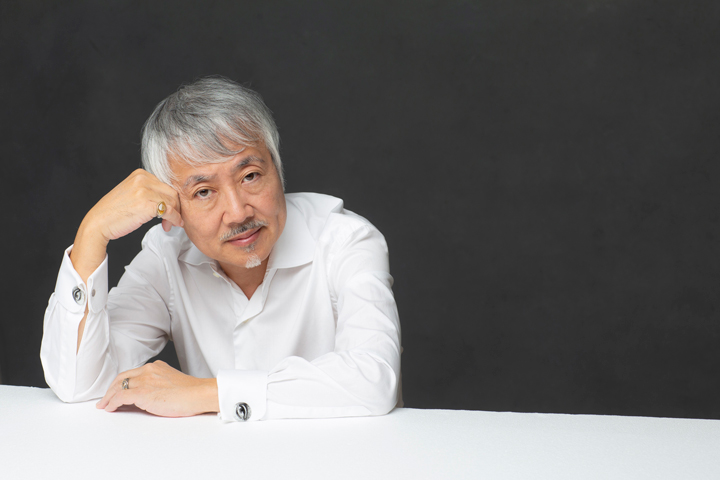CONTACT
YASUAKI SHIMIZU
BACH BOX
BACH BOX
バッハ・ボックス

ビクター VICL-60112
第39回日本レコード大賞企画賞受賞
Victor Entertainment VICL-60112
39th Japan Records Awards for Best Production
-
1Aria - Goldberg Variations (アリア - ゴルトベルク変奏曲) Aria - Goldberg Variations
-
2Courante - Cello Suites No. 1 (クーラント - 無伴奏チェロ組曲第1番) Courante - Cello Suites No. 1
-
3Menuet 2 - English Suites No. 4 (メヌエット - イギリス組曲第4番) Menuet 2 - English Suites No. 4
-
4Sarabande - Cello Suites No. 2 (サラバンド - 無伴奏チェロ組曲 第2番) Sarabande - Cello Suites No. 2
-
5Fugue 1 - The Art of Fugue (フーガ 1 - フーガの技法) Fugue 1 - The Art of Fugue
-
6Prelude - Cello Suites No. 1 (プレリュード - 無伴奏チェロ組曲 第1番) Prelude - Cello Suites No. 1
「チェロ・スウィーツ 1.2.3」が発表された翌年、97年に完成されたこのミニアルバムでは、清水にとっての空間の意味、そして彼の姿勢が再認識できる。 前回同様長い残響の「無伴奏チェロ組曲」リアレンジメントも何曲かあるが、それとは対照的に、全く残響のない、無機質なサイン波を使用した「ゴールドベルク変奏曲」や「フーガの技法」等が収められている。これ については、彼が幼少の頃熱中していたモールス信号による遠隔相互コミュニケーションや、秋の虫の声、それも何十万もの虫が一斉に宇宙に向かって信号を送っているかのような電子音大合唱等の日常体験が、引き続き彼の中に生きている事を証明している。
Completed one year after the release of Cello Suites 1.2.3, this mini-album presents another dimension of Shimizu’s attitude and perception of space. In contrast to his renditions of the Cello Suites, which are dominated by strong reverberation, this release includes the non-reverberated “Goldberg Variations” and “Art of Fugue.” The inorganic sine wave sounds recall Shimizu’s childhood experimentations with Morse Code and memories of the electric-sounding chorus of insects.
-
清水靖晃は、彼の意に反して、ジャズな人、ワールド・ビートな人、エンカな人、ポップな人、エクスペリメンタルな人、と括られてきた。しかし、そんなことにお構いなしの清水靖晃は益々アンビバレンス、ハイブリッドな道を進む。そして昨年は、バッハに挑戦した。それも無謀なまでのサキソフォンをもってである。
あの挑戦、冒険は実に見事であった。バッハのバッハたる所以であるポリフォニー(複旋律音楽)を表現するために、様々な実験を試み、アルバム『Cello Suites 1.2.3』に収録された「無伴奏チェロ組曲、第二番」は、大谷石の地下採掘場という神秘と未知の空間でレコーディングされた。「しばらくの間、バッハにこだわりつづけようと思っています」の言葉どおり、清水靖晃のバッハ第二弾は『Bach Box』。
前作がナチュラル志向とするなら今回は、バッハの時代では考えられなかった女性(ヴォーカル)の参加や対位法を遊んだ女性の会話、Akai S-900 のオシレータが発する正弦波シグナル音など、多少のテクノロジーとヴォイスをトリートメント(アレンジ)の要素として添加した実験的且つ新解釈バッハ論を展開するモダン志向となっている。
「バッハは全てニュートラル‥‥例えるならそれはまるで球」と靖晃氏は語る。で、私は思った「清水靖晃こそニュートラル!!」と。
そしてバッハの楽譜に見受けられる、不均等な美学も人間、清水靖晃に在る、と。
(伊藤 史朗)
-
Yasuaki Shimizu has been fitted into just about every category imaginable: people have called his work jazz, pop, enka, world music, experimental. But those labels haven’t stopped him from creating a body of work that is always ambivalent, hybrid. Recently he took on Bach. Not only that, but he did it on saxophone. This was a bold, radical move. In order to achieve the polyphony that is so essential to Bach, he recorded the second of Bach’s unaccompanied Cello Suites in the underground Ohya stone quarry—a little-known, mystical space. Afterward he said, “There are still lots of approaches left to take to Bach,” and sure enough, his next venture was Bach Box. If his first effort had been natural and faithful, this was something completely new, incorporating such elements as participation of women vocalists (which would have been unthinkable in Bach’s time), the counterpoint of montage-style conversation, and the sine wave signal sounds given off by an Akai S-900 oscillator. With his treatment of technology and voices, he took an unprecedentedly modern approach to Bach theory. Shimizu has said, “Everything in Bach is neutral … as changing and unlimited as a globe.” This made me think, “Everything about Yasuaki Shimizu is neutral and unlimited too.” And that the disproportionate aesthetic so evident in Bach’s musical scores just happens to be shared by Shimizu.
—Shiro Ito (translated by Elizabeth Floyd)
プロデューサー:清水靖晃
共同プロデュース:内田英樹(2、6)
作曲:J. S. バッハ
清水靖晃:テナーサキソフォン、フルート、アカイS-900シグナル
sus4:ヴォーカル(4)
エリザベス・フロイド 、メリー・エンジェル:ヴォイス(3)
ジェニー・ホワイト、 パメラ・バジリオ:ヴォイス (3、5)
レコーディング/ミキシング:谷田洋一/加村武(2、6)、清水靖晃(1、3、5)、叶眞司(4)
レコーディングスタジオ:NHK(2、6)、サブマリン(1、3、5)、コンシピオ(4)(東京)
トラック 2、6:NHKドラマ「もうひとつの心臓」サウンドトラックより
(平成9年度文化庁芸術祭優秀賞受賞作品)
Produced by Yasuaki Shimizu, co-produced with Eiki Uchida (2, 6)
Composed by J.S. Bach
Yasuaki Shimizu: tenor saxophone, flute, Akai S-900 signal, treatments
Sus 4: vocals (4)
Elizabeth Floyd, Merry Angel: spoken voices (3)
Jenny White, Pamela Virgilio: spoken voices (3, 5)
Recorded/mixed by Yoichi Tanaka, Takeshi Kamura (2, 6) at NHK, Yasuaki Shimizu (1, 3, 5) at Submarine, Shinji Kano (4) at Consipio (Tokyo)
Tracks 2, 6 from the soundtrack Mo Hitotsu no Shinzo
